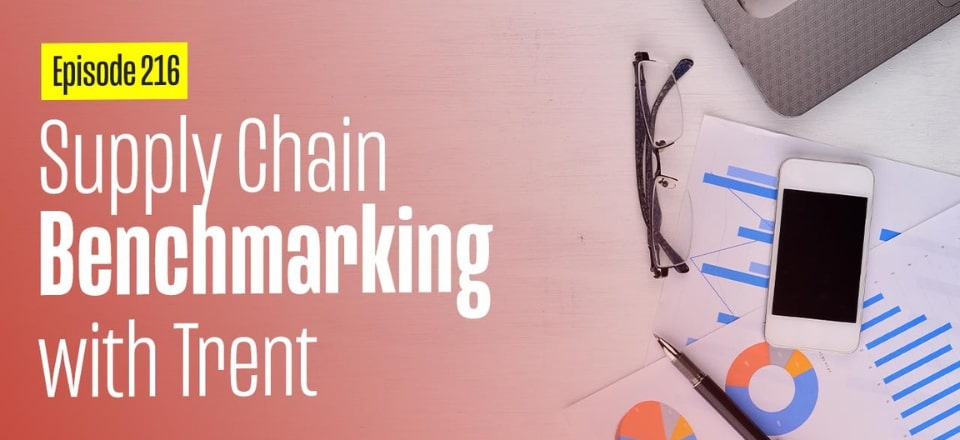Benchmarking across the supply chain covers various aspects, from procurement to distribution, affecting overall efficiency.
Supply Chain Benchmarking is vital for improving performance and effectiveness, with companies using different practices to achieve their goals.
Curious about how these practices work? Want to know why they are essential?
Trent Morris will provide detailed answers. Watch the video below to learn more.
Rob: Welcome back to another session on supply chain management. We’re delving into supply chain benchmarking with a special focus on cost benchmarking. I’m thrilled to have Trent Morris joining us again. Trent, it’s great to have you here.
Trent: Thanks, Rob! I’m excited to be here and share some insights on this important topic.
Rob: Fantastic! Let’s dive into it.
Understanding Cost Benchmarking
Rob: To start, can you explain why cost benchmarking is becoming increasingly important?
Trent: Absolutely. Cost benchmarking has gained prominence because businesses are dealing with rising costs and shifting demand. Cost benchmarking helps companies assess whether their logistics expenses are competitive compared to industry standards. Rather than going through expensive and time-consuming processes like RFPs, cost benchmarking provides a quicker, more cost-effective way to evaluate if your costs are in line with the market.
Effective Benchmarking Methods
Rob: That makes sense. So, how exactly do you approach benchmarking?
Trent: We start by gathering about a year’s worth of transaction data related to transport, warehousing, and ocean freight. This data is then compared with industry benchmarks and validated through third-party sources. If we find any discrepancies, we might issue a small RFI, clearly stating that it’s for benchmarking purposes only, not immediate sourcing. For those who prefer not to hire consultants, there are other resources. Industry reports like the Drewry World Container Index for ocean freight and the Australian Institute of Petroleum’s fuel price index can provide valuable insights into market trends and help businesses understand their cost position without committing to a full benchmarking exercise.
Leveraging Industry Connections
Rob: That’s a useful approach. What about networking? How can that help with benchmarking?
Trent: Networking is crucial. By connecting with industry peers and potential suppliers, businesses can gain informal insights and comparisons. It’s also important to maintain strong relationships with current suppliers. They can provide additional information about market trends and potential cost-saving opportunities. These interactions help businesses stay informed about competitive rates and industry practices, offering a broader perspective on their own performance.
The Value of Regular Benchmarking
Rob: Absolutely, maintaining those connections can be very beneficial. Finally, why is regular benchmarking so important?
Trent: Benchmarking is key for staying competitive and making informed decisions. It’s like running a race—you might think you’re performing well until you compare yourself with others. Regular benchmarking ensures you’re aligned with industry standards and helps identify opportunities for optimization. It’s essential for understanding where you stand in the market and continuously improving your logistics operations.
Rob: Thanks, Trent. This has been incredibly insightful.
Note: This is not the full transcript. Please watch the complete video above for detailed insights of this topic.
Related articles on this topic have appeared throughout our website, check them out:
- Freight Benchmarking: What Is It? Why Do It?
- How to Select the Right KPIs for Supply Chain Benchmarking
- The What, Why, How of Supply Chain Benchmarking
- Common Sense Warehouse Performance Metrics for Supply Chain Benchmarking
- 8 Uses for Supply Chain Benchmarking and Their Most Valuable Benefits
Editor’s Note: The content of this post was originally published on Logistics Bureau’s website dated November 15, 2023, under the title “Supply Chain Benchmarking with Trent Morris“.


